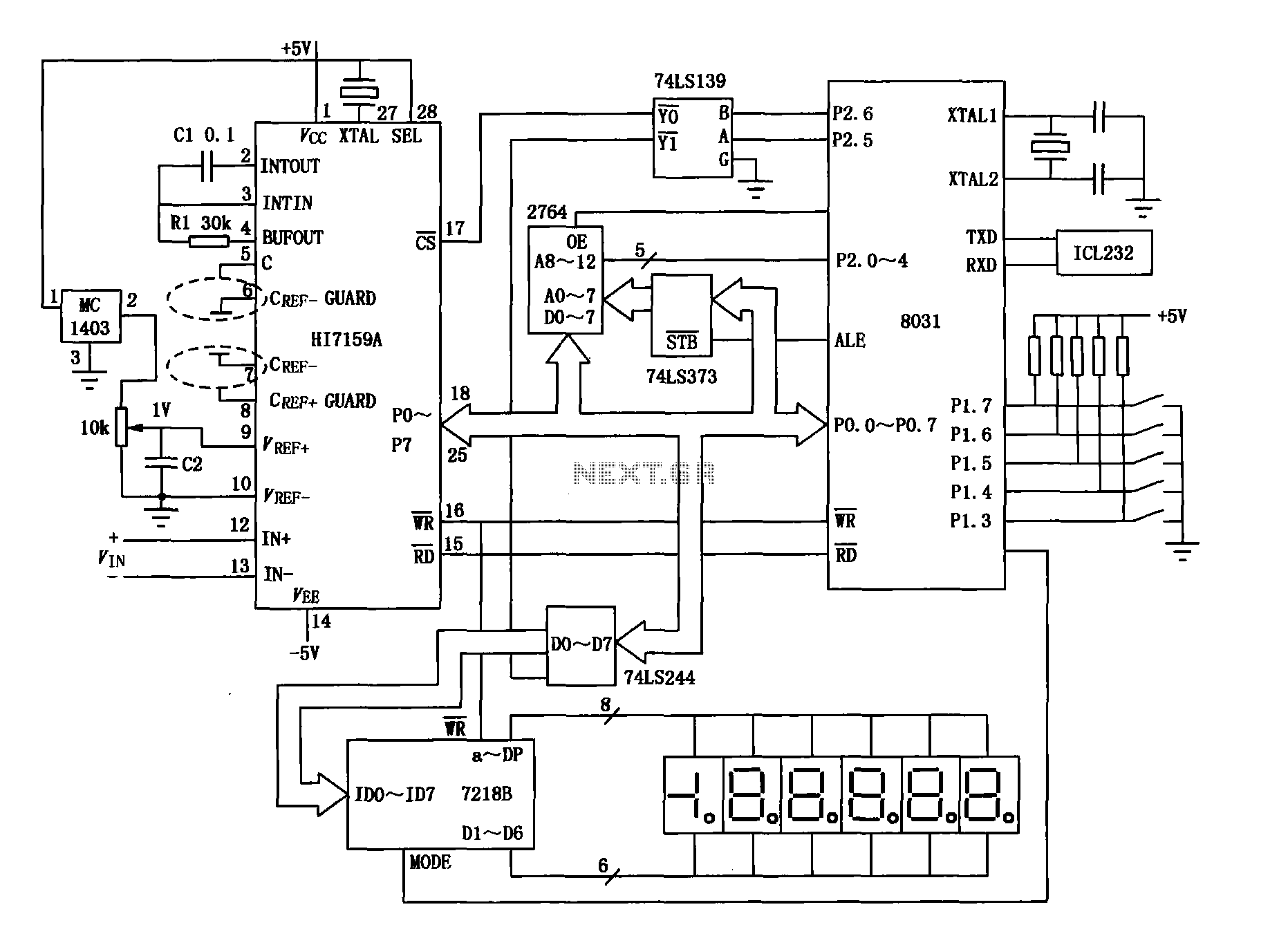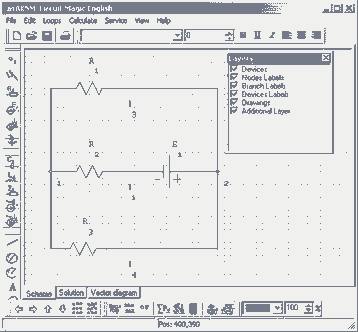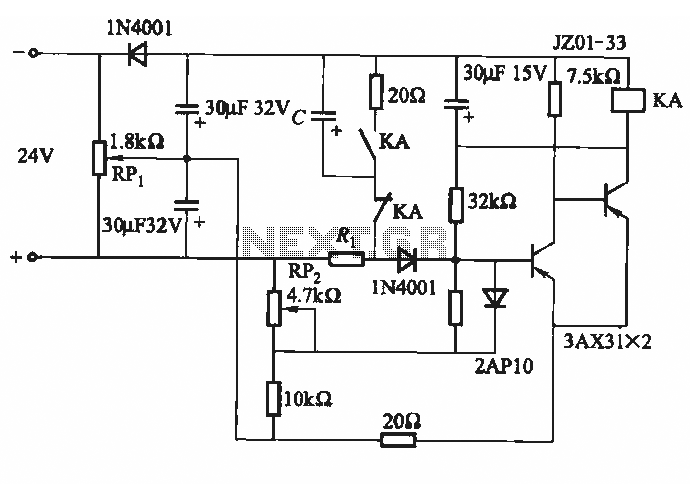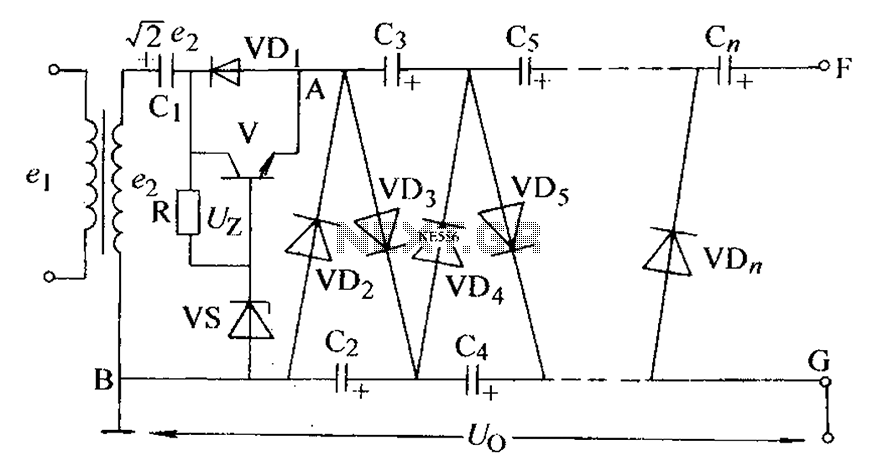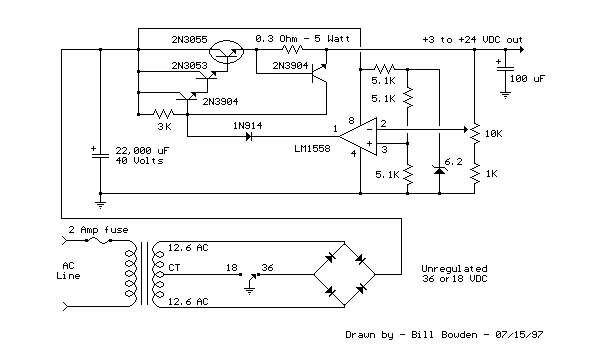
Hydrophone preamplifier circuit
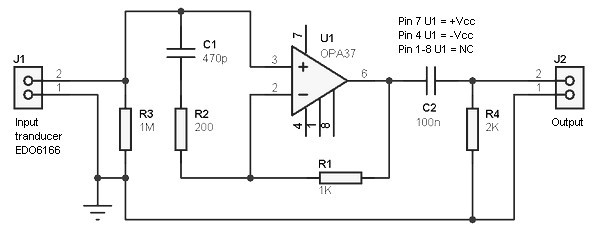
Hydrophone preamplifier circuit. It is simple and utilizes only conventional components. The transducer used is of the piezo type and has a relatively high output impedance, necessitating a preamplifier with a high input impedance.
The hydrophone preamplifier circuit is designed to amplify the signals received from a piezoelectric transducer, which is commonly used in underwater applications for detecting sound waves. The piezo transducer converts acoustic energy into electrical signals, but due to its high output impedance, it requires a preamplifier that can effectively interface with it without significantly loading the transducer.
The circuit typically includes a high-impedance input stage, often implemented using a field-effect transistor (FET) or an operational amplifier configured in a voltage follower arrangement. This configuration ensures that the input impedance is sufficiently high to prevent signal attenuation from the transducer. The output stage of the preamplifier may include additional amplification stages to boost the signal level for further processing or transmission.
Key components of the circuit include resistors and capacitors that are selected to optimize the bandwidth and frequency response of the amplifier. Bypass capacitors may be employed to filter out any unwanted noise and ensure stable operation. The overall design is aimed at achieving low noise and high fidelity in the amplified signal, making it suitable for sensitive underwater acoustic measurements.
In summary, the hydrophone preamplifier circuit is a critical component in underwater acoustic systems, enabling effective signal amplification while maintaining the integrity of the original acoustic signals detected by the piezoelectric transducer.Hydrophone preamplifier circuit. As you can see, it`s really simple and uses only conventional components. The transducer used, is piezo type and has a relatively high output impedance, which requires a preamp with a high input impedance. 🔗 External reference
The hydrophone preamplifier circuit is designed to amplify the signals received from a piezoelectric transducer, which is commonly used in underwater applications for detecting sound waves. The piezo transducer converts acoustic energy into electrical signals, but due to its high output impedance, it requires a preamplifier that can effectively interface with it without significantly loading the transducer.
The circuit typically includes a high-impedance input stage, often implemented using a field-effect transistor (FET) or an operational amplifier configured in a voltage follower arrangement. This configuration ensures that the input impedance is sufficiently high to prevent signal attenuation from the transducer. The output stage of the preamplifier may include additional amplification stages to boost the signal level for further processing or transmission.
Key components of the circuit include resistors and capacitors that are selected to optimize the bandwidth and frequency response of the amplifier. Bypass capacitors may be employed to filter out any unwanted noise and ensure stable operation. The overall design is aimed at achieving low noise and high fidelity in the amplified signal, making it suitable for sensitive underwater acoustic measurements.
In summary, the hydrophone preamplifier circuit is a critical component in underwater acoustic systems, enabling effective signal amplification while maintaining the integrity of the original acoustic signals detected by the piezoelectric transducer.Hydrophone preamplifier circuit. As you can see, it`s really simple and uses only conventional components. The transducer used, is piezo type and has a relatively high output impedance, which requires a preamp with a high input impedance. 🔗 External reference
